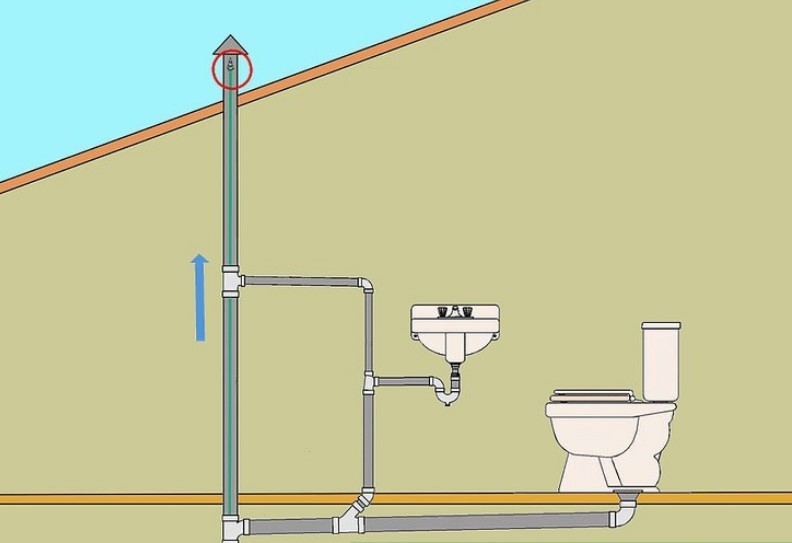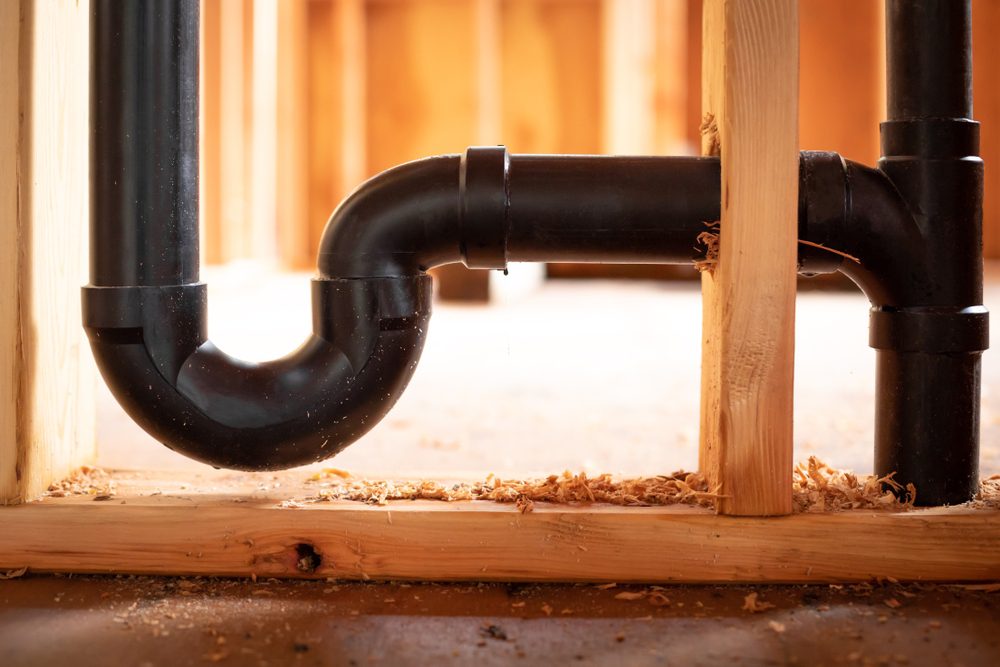Why Proper Ventilation Safeguards Your Plumbing System
Why Proper Ventilation Safeguards Your Plumbing System
Blog Article
What're your ideas with regards to What Are Plumbing Vents and Why Are They Important??

Correct ventilation in plumbing systems is typically neglected, yet it is important for preserving the performance and safety of your home's plumbing. Ventilation assists control atmospheric pressure, protect against the buildup of harmful gases, and make sure the efficient removal of waste. In this guide, we will certainly explore the value of appropriate pipes ventilation, just how it works, and the benefits it gives your plumbing system.
Comprehending Air Flow in Plumbing
Air flow in plumbing refers to the network of pipelines that permit air to flow through the drain system. These vents offer numerous objectives, including regulating air pressure within the pipes, stopping sewage system gases from entering the home, and helping in the smooth circulation of wastewater.
Exactly How Air Flow Functions in Pipes Solutions
Atmospheric Pressure Policy
Correct ventilation keeps balanced atmospheric pressure within the plumbing system. When water flows through pipelines, it displaces air. Without ample ventilation, this displacement can develop unfavorable stress, resulting in slow down drains pipes or siphoning of water from traps, which can cause unpleasant odors to seep into the home.
Preventing Sewage System Gas Accumulation
One of the most critical functions of plumbing vents is to stop sewage system gases, such as methane and hydrogen sulfide, from building up within the home. These gases can pose severe health and wellness risks and are very flammable. Vent pipes enable these gases to run away safely outside.
Aiding in Waste Elimination
Air flow assists in the effective elimination of wastewater by preventing airlocks in the drainage system. When air can stream easily with the vents, it enables water and waste to stream efficiently with the pipes, decreasing the danger of blockages and backups.
Types of Pipes Vents
Key Stack Vent
The main pile air vent, additionally referred to as the vent stack, is the key vent in a plumbing system. It expands from the major drainpipe align with the roof, permitting gases to get away and fresh air to go into the system.
Branch Vent
Branch vents link to the main pile air vent and offer specific components, such as sinks, commodes, and showers. These vents make sure that each fixture has sufficient air flow to work properly.
Air Admittance Shutoff (AAV).
An Air Admittance Shutoff (AAV) is a one-way shutoff that allows air to go into the pipes system without the need for a standard air vent pipe expanding via the roofing system. AAVs are frequently used in improvements or locations where setting up a typical air vent is unwise.
Indicators of Poor Ventilation in Plumbing.
Slow Draining Fixtures.
If your sinks, tubs, or bathrooms are draining gradually, it could be an indicator of inadequate air flow. Inadequate air flow can produce a vacuum result, making it difficult for water to drain pipes effectively.
Gurgling Sounds.
Gurgling noises originating from drains pipes are frequently a result of air being sucked with water traps as a result of negative pressure in the pipelines. This is a clear indicator of insufficient air flow.
Unpleasant Smells.
Sewage system smells inside your home are a red flag that your pipes system is not effectively aerated. This could suggest that sewage system gases are not being adequately aired vent outside, leading to possibly dangerous problems.
Typical Ventilation Errors.
Poor Vent Sizing.
Utilizing small vent pipes can bring about poor air circulation and stress imbalances in the system. It's vital to use vents that meet the particular requirements of your plumbing system.
Improper Vent Positioning.
Positioning vents also much from the fixtures they offer can minimize their performance. Correct placement makes sure that air can flow easily and efficiently through the system.
Disregarding Code Needs.
Building ordinance give details standards for plumbing air flow. Overlooking these codes can cause a system that stops working to function properly and may result in costly repair work or carcinogen.
Benefits of Correct Air Flow.
Boosted System Effectiveness.
Properly aerated pipes systems operate a lot more successfully, with fewer blockages, faster draining pipes, and much less stress on the pipes. This effectiveness expands the life expectancy of the pipes system.
Improved Air High Quality.
By preventing drain gases from entering your home, proper ventilation contributes to better interior air high quality, making your living setting healthier and extra comfortable.
Avoiding Water Damages.
Adequate air flow aids prevent water from being siphoned out of catches, which can bring about drain gases entering the home and triggering water damages over time.
Actions to Make Sure Correct Ventilation.
Consulting Pipes Codes.
Constantly consult local plumbing codes when making or changing your pipes system. These codes provide the needed standards for proper venting and guarantee your system meets security requirements.
Routine Examination and Maintenance.
Routine examinations can aid recognize potential air flow issues before they end up being major problems. Upkeep tasks, such as cleansing vent pipes and checking for obstructions, are vital for maintaining the system in good working order.
Professional Installment.
For brand-new setups or significant modifications, it's wise to employ a professional plumber. They have the experience to make sure the air flow system is appropriately designed and mounted according to code.
Final thought.
Correct ventilation is an important component of any kind of pipes system, making certain that it functions efficiently and safely. By comprehending the importance of ventilation, identifying the signs of bad ventilation, and taking actions to keep your system, you can stop expensive concerns and protect your home's air high quality.
4 Things You Should Know About Your Plumbing Vents
What Plumbing Vents Are
Also called a vent stack, a plumbing vent is a vertical pipe attached to your drain line that runs through your roof. The plumbing vent pipe, or plumbing air vent, removes gas and odors from your plumbing system and allows fresh air to enter the pipes, helping the water to flow out of the drain pipes.
What Plumbing Vents Do
Plumbing vents have two basic functions. One of which is to allow unpleasant smelling wastewater and sewer gasses to escape your plumbing system instead of entering your home. Plumbing vent pipes are typically located on roofs, away from windows, to ensure the fumes exit the home completely.
The other function of the plumbing vent is to move fresh air into your plumbing system. This helps move water through every plumbing fixture in your house, like toilets and sink drains. Think of the way in which you need to let a little air into the bottle as you pour soda in order to make the drink flow smoothly.
Different Types of Plumbing Vents
True vent: This is the most common vent option. In simplest terms, a true vent is a vertical pipe attached to your drain line that exits through the roof. They often function as the main vent that other fixtures can connect to. Re-vent pipe or auxiliary vent: Attached to the drain line near specific plumbing fixtures, re-vent pipes run up and over to connect to the main vent. Common vent: Two plumbing fixtures installed on opposite sides of a wall are typically tied into the vent stack using something known as a sanitary cross. Wet vent: This venting option operates as a drain pipe and a vent at the same time. Wet vent drainage systems drain water from one fixture while venting the air from another. Although they’ve been used for over 100 years, wet vent systems have only recently been added to the plumbing code in many areas. If you’re planning on installing one in a bathroom remodel, make sure you check your local code prior to construction. Loop vent: For free-standing fixtures like kitchen island sinks, loop vents are ideal. These vent pipes run under the floor, rise from the P-trap, and create a loop inside the cabinet sink. Air admittance valve: An AAV is a one-way mechanical valve typically installed at the site of the plumbing fixture. AAVs allow venting to occur without having to tie into a larger venting system. They’re ideal for venting fixtures where you aren’t able to easily connect to an existing vent system. Common Plumbing Vent Issues
Although vent pipes typically don’t have water flowing through them, they’re still subject to many typical plumbing issues. For example, clogs are one of the most common problems associated with sewer vent pipes. If your vent pipe gets clogged, all of your plumbing fixtures tied into the vent stack will be affected.
A sink with a slow drain that bubbles and gurgles or a strong sewage smell around your toilet are both indicators that your toilet vent pipe is clogged. Because most vent pipes exit through the roof, old leaves, twigs or even a bird’s nest could be clogging the pipe.
Clogs in your vent pipe system cause a buildup of negative pressure, meaning that water won’t be able to flow out of your home very well. It’s similar to putting your finger over the opening of a straw to trap water inside. When you remove your finger, the water is able to flow out of the straw.
If you suspect you have any blockage in your vent, make sure you have a professional come examine the situation. Left unchecked, a blocked air vent can lead to other costly repairs, like leaks and sediment buildup.
Under Pressure
Pipe vents are essential aspects of a home’s plumbing system. Owning a home means learning about all sorts of things you never put much thought into before. But by understanding as much as you can about the important systems of your home, you can keep those budgets intact and those anxiety levels low.
https://www.homeserve.com/en-us/blog/home-improvement/plumbing-vents/

Do you appreciate reading about What Is A Plumbing Vent & How Do They Work?? Make feedback directly below. We'd be happy to listen to your ideas about this content. We hope that you come back again later on. Sharing is good. Helping others is fun. We recognize the value of your readership.
Estimating Report this page